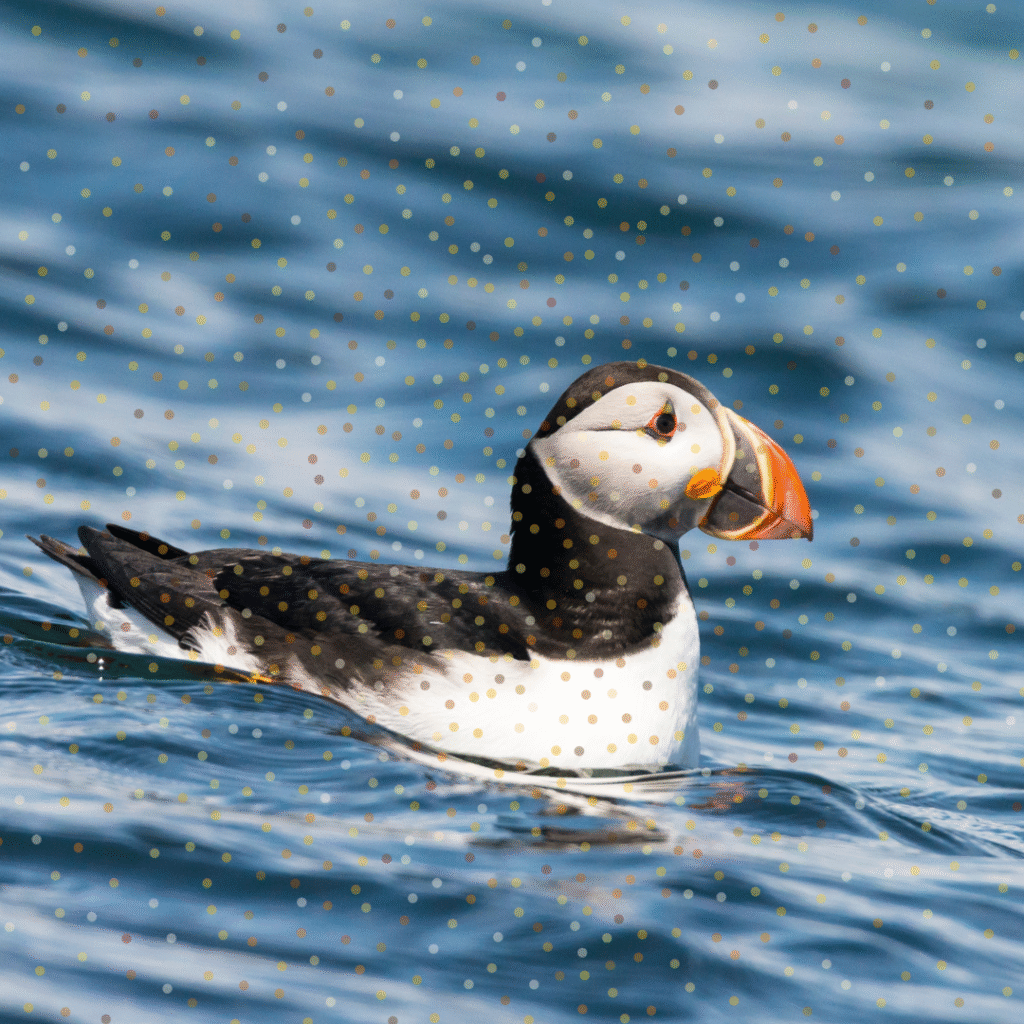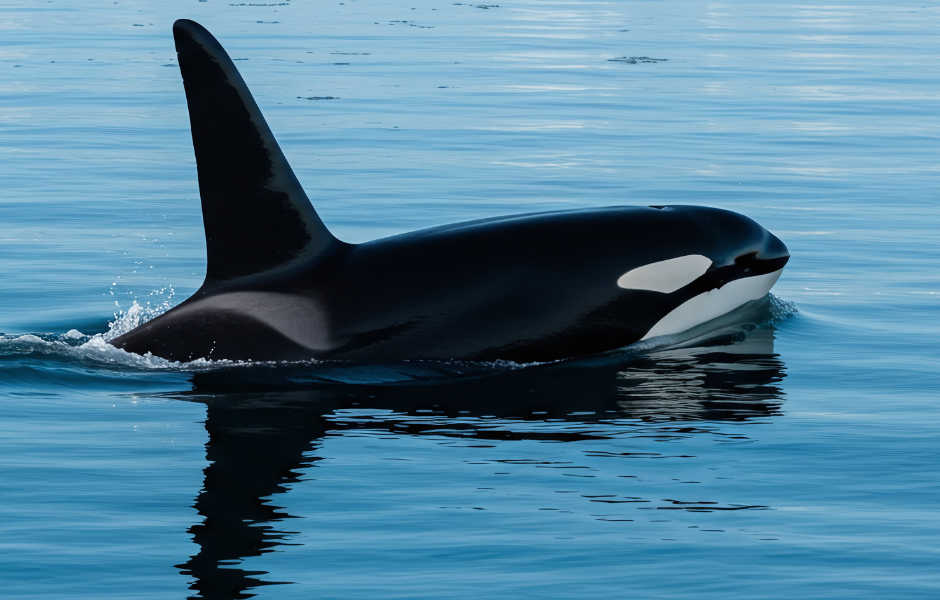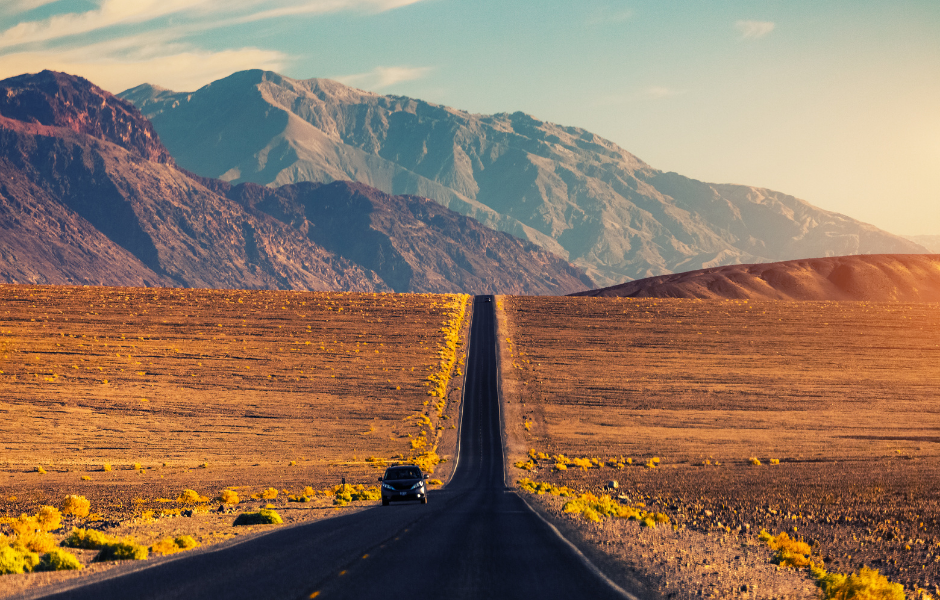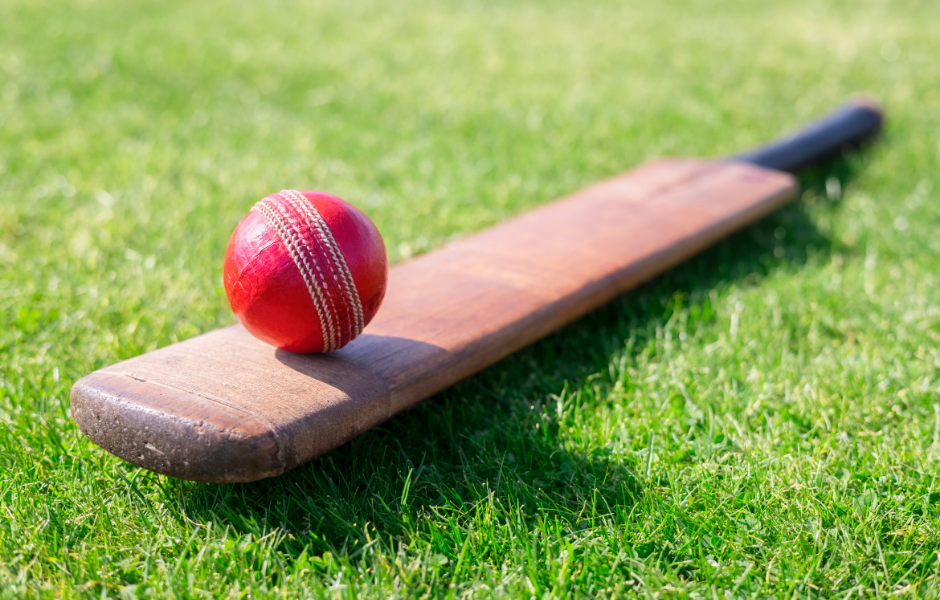
This children’s article, Puffins return in record numbers to Skomer Island, has been written for native English speakers and learners of English as a second or foreign language. It can help children practise reading and comprehension, learn useful vocabulary, and explore how conservationists are working to protect seabirds. Written by Sinead O’Carroll, a native English speaker and EFL teacher since 2017.
The highest number of puffins ever recorded on Skomer Island
Counting birds isn’t easy. They fly, swim, waddle and hide. But when we’re trying to protect them from disappearing forever, it’s a very important job.
Recently, the job was to count puffins on Skomer Island, a tiny island off the coast of Wales.
This year, conservation staff were delighted to count 43,626 puffins, the highest number ever recorded on the island.
This is wonderful news for a bird that’s facing big problems around the world. Puffins are listed as vulnerable to extinction, which means their numbers are falling and they could run out if we don’t help them.
Why is Skomer Island special?
Skomer Island is a small place, just 1.13 square miles (2.92 square kilometres), but it’s hugely important for puffins; they return here every year between April and July to build their burrows, lay eggs, and raise their chicks.
One reason puffins do so well here is that Skomer doesn’t have predators like rats or foxes that might eat birds or eggs. The island is surrounded by sea, so most animals can’t reach it. There’s also lots of food in the water to help puffins and their chicks grow strong.”
Skomer is only 15 minutes by boat from the coast of Pembrokeshire in Wales, but it feels like a whole other world. People come from all over the world to see the puffins and other amazing wildlife on the island.
Counting puffins
This year, six staff members worked together to count puffins on Skomer. It’s no easy task. The island is divided into seven sections, and they count birds on the land, in the sea, and even estimate how many are flying overhead.
The counts happen in the evening and early in the puffin season, so they don’t miss birds that have already gone into their burrows.
The results are helping scientists track how puffin numbers are changing. While Skomer’s puffins are doing well, puffins in other parts of the world are in trouble. Climate change, pollution and food shortages are causing serious problems.
The importance of conservation work
That’s why the work being done on Skomer Island is so important. It gives hope that, with care and conservation, we can protect these much-loved birds for the future.
Find out more about Skomer Island and its puffins on the Wildlife Trust of South and West Wales website

Article vocabulary list
- Vulnerable to extinction – when a species is at risk of disappearing forever
- Conservation – protecting nature and animals so they can live safely
- Predators – animals that hunt and eat other animals
- Colony – a group of the same animals living together in one place
- Burrows – holes in the ground where animals live
- Estimate – to make a good guess based on what you know
- Rafting – when birds float together on the water
- Species – a group of animals or plants that are of the same kind
- Pollution – dirty or harmful things that get into the air, water or land
- Mainland – the main part of a country, not the islands around it
Comprehension questions
Just click the plus (+) to see the answer
1. Why is counting puffins an important job?
It helps scientists protect them from extinction.
2. How many puffins were counted on Skomer Island this year?
a) 3,462
b) 43,626
c) 4,362
Answer: b) 43,626
3. What makes Skomer Island a safe place for puffins?
There are no predators like rats or foxes, and there is plenty of food.
4. What does “vulnerable to extinction” mean?
It means a species is at risk of disappearing forever.
5. Why do puffins return to Skomer Island every year?
To lay eggs and raise their chicks.
6. How do staff count puffins on the island?
They count birds on land, in the sea, and flying in the air.
7. What problems do puffins face in other parts of the world?
Pollution, food shortages, and climate change.
8. Where is Skomer Island located?
Off the coast of Pembrokeshire in Wales.
Sinead is a writer and EFL teacher with eight years’ experience. She’s a native English speaker who loves making news stories fun and easy to understand for children around the world. Her passions include travel, animals, and helping to make the world a kinder, more sustainable place.




